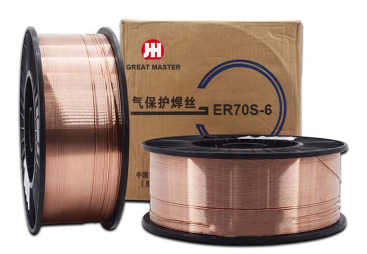Choosing the Right E6013 Welding Rods and Electrodes for Your Projects
Understanding E6013 Welding Electrodes The Versatile Choice for Welders
Welding is an essential fabrication process used across numerous industries, from construction to automotive repair. Among the various techniques available, arc welding is one of the most common practices, largely due to its efficiency and effectiveness. Within the realm of arc welding, the choice of electrode plays a crucial role in determining the quality and feasibility of the weld. One of the most popular types of electrodes in this category is the E6013 welding rod. This article delves into the characteristics, applications, and advantages of the E6013 electrode, helping both novice and experienced welders make informed choices in their projects.
What is E6013?
The E6013 is a type of consumable electrode used in various arc welding processes, particularly shielded metal arc welding (SMAW). The E signifies that it is an electrode. The 60 indicates that the electrode can produce a minimum tensile strength of 60,000 psi when used for welding. The 1 denotes that it can be welded in all positions, from flat to overhead. Finally, 3 refers to the coating type, which is a titania-based flux that provides the necessary shielding to protect the weld pool from contamination.
Characteristics of E6013 Electrodes
1. Easy to Use One of the standout features of E6013 electrodes is their ease of use. They provide a stable arc and a smooth, steady weld pool, making them ideal for beginners and those with less experience. The electrodes can be used with a wide range of welding machines, including both AC and DC sources.
2. Versatile Applications E6013 electrodes are highly versatile and can be used to weld various materials, including mild steel, stainless steel, and even some non-ferrous metals. This makes them suitable for a plethora of applications, ranging from general purpose fabrication to repair work.
3. Excellent Appearance The welds produced with E6013 electrodes are known for their smooth and aesthetically pleasing surface finish. The high-quality finish is particularly important in applications where appearance is a priority, such as in architectural work or artistic projects.
4. Minimal Spatter E6013 electrodes produce minimal spatter during welding. This characteristic not only contributes to a cleaner working environment but also reduces the time required for post-weld cleanup, enhancing overall efficiency.
welding rods electrodes e6013

5. Good Penetration These electrodes provide good penetration and a sound weld bead. This is essential for ensuring the strength and durability of the welded joint, making E6013 suitable for structural applications.
Applications of E6013 Electrodes
The versatility of E6013 electrodes allows them to be employed in various welding applications. Common uses include
- Construction E6013 is widely used in the construction industry for welding structural steel and frames, as it offers the strength required for such projects. - Automotive Repair Due to its ease of use and excellent finish, E6013 electrodes are often utilized in automotive welding, whether for repairs or manufacturing parts.
- Home Projects Hobbyists and DIY enthusiasts frequently choose E6013 electrodes for home projects, such as building fences, repairing farm equipment, or creating metal artwork.
- Fabrication Shops Many fabrication shops prefer E6013 electrodes for general metalworking tasks due to their versatility and reliability.
Conclusion
In summary, the E6013 welding electrode is a favored choice among welders for its ease of use, versatility, and excellent performance across a range of applications. Whether you’re an experienced welder or just starting in the field, understanding the characteristics and benefits of E6013 can help you make informed decisions on your welding projects. By choosing the right electrode, you can ensure your welds are strong, clean, and visually appealing, ultimately leading to successful outcomes in whatever task you undertake.
-
AWS E6013 Welding Electrodes: All-Position & Smooth Arc RodsNewsAug.25,2025
-
E312 Electrode: High Strength Welding Rod for Dissimilar MetalsNewsAug.24,2025
-
J506 Welding Rod: High-Strength, Crack-Resistant ElectrodeNewsAug.23,2025
-
E71T-1 Shielding Gas for Superior Welding Quality & EfficiencyNewsAug.22,2025
-
E316L Welding Rod: Premium 316L Stainless Steel WeldsNewsAug.11,2025
-
Premium SG2 Welding Wire | High-Quality MIG/MAG for SteelNewsAug.10,2025


